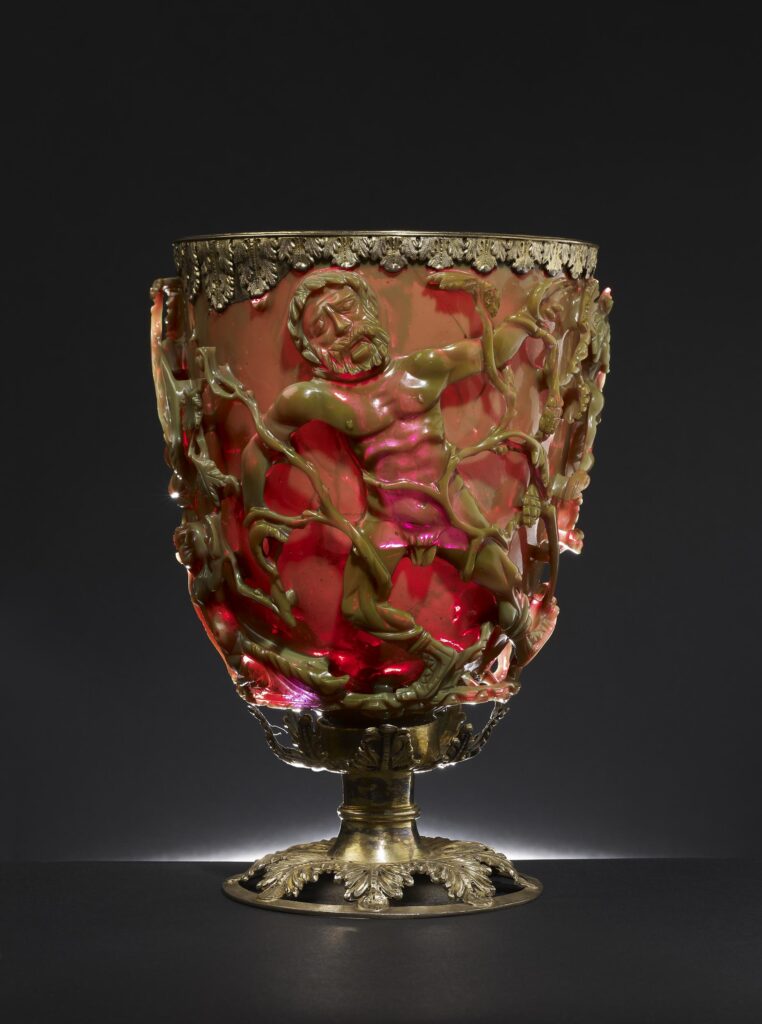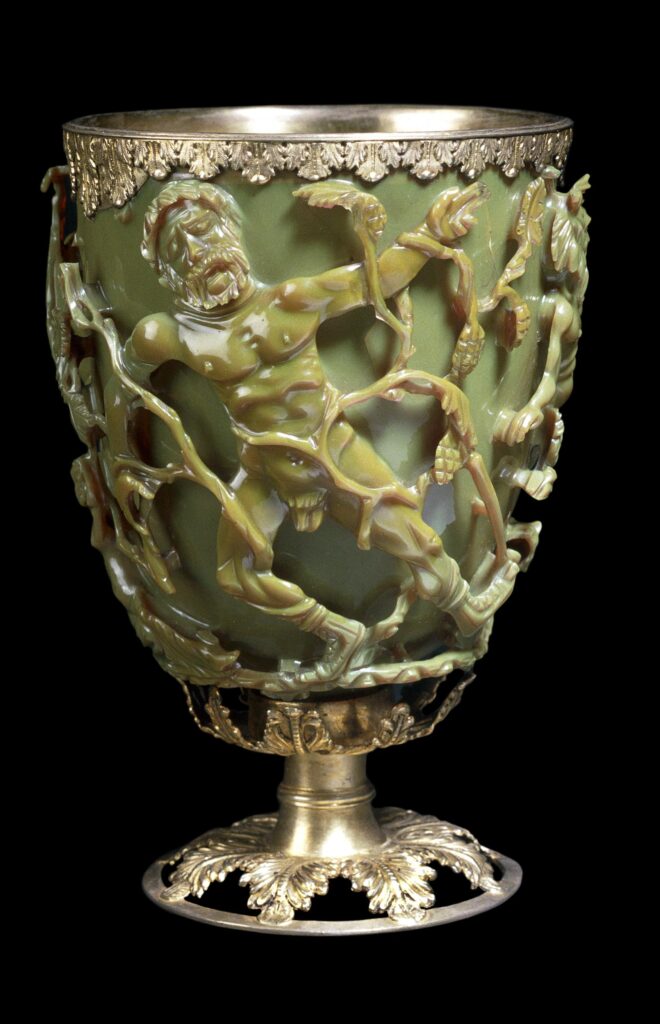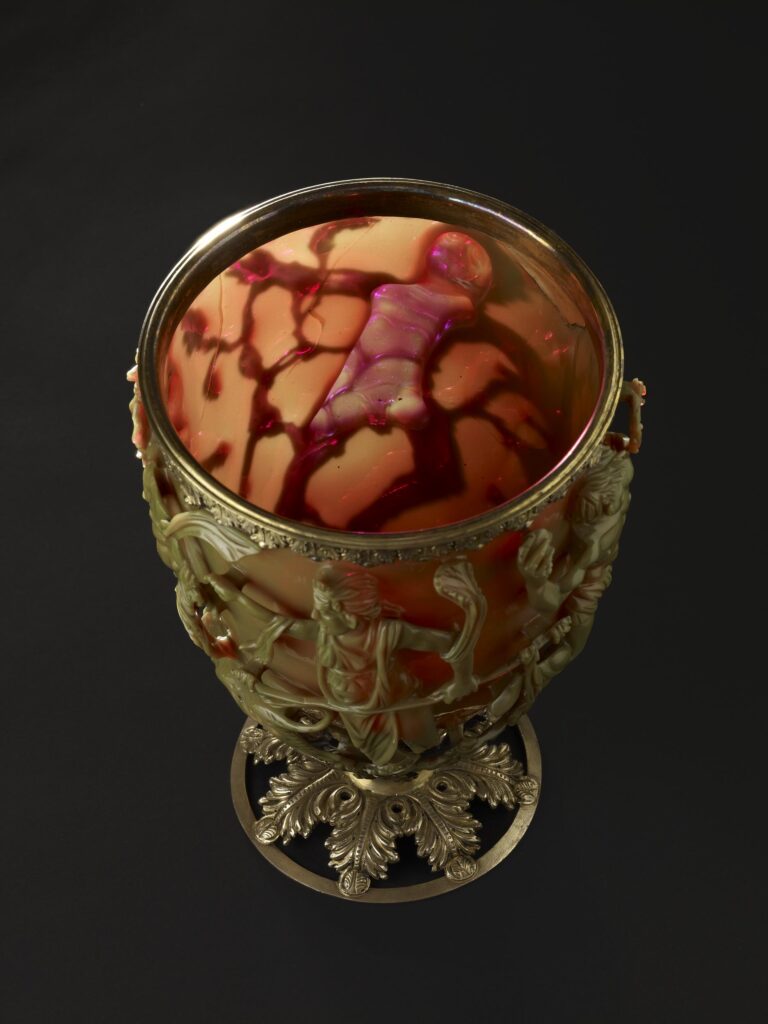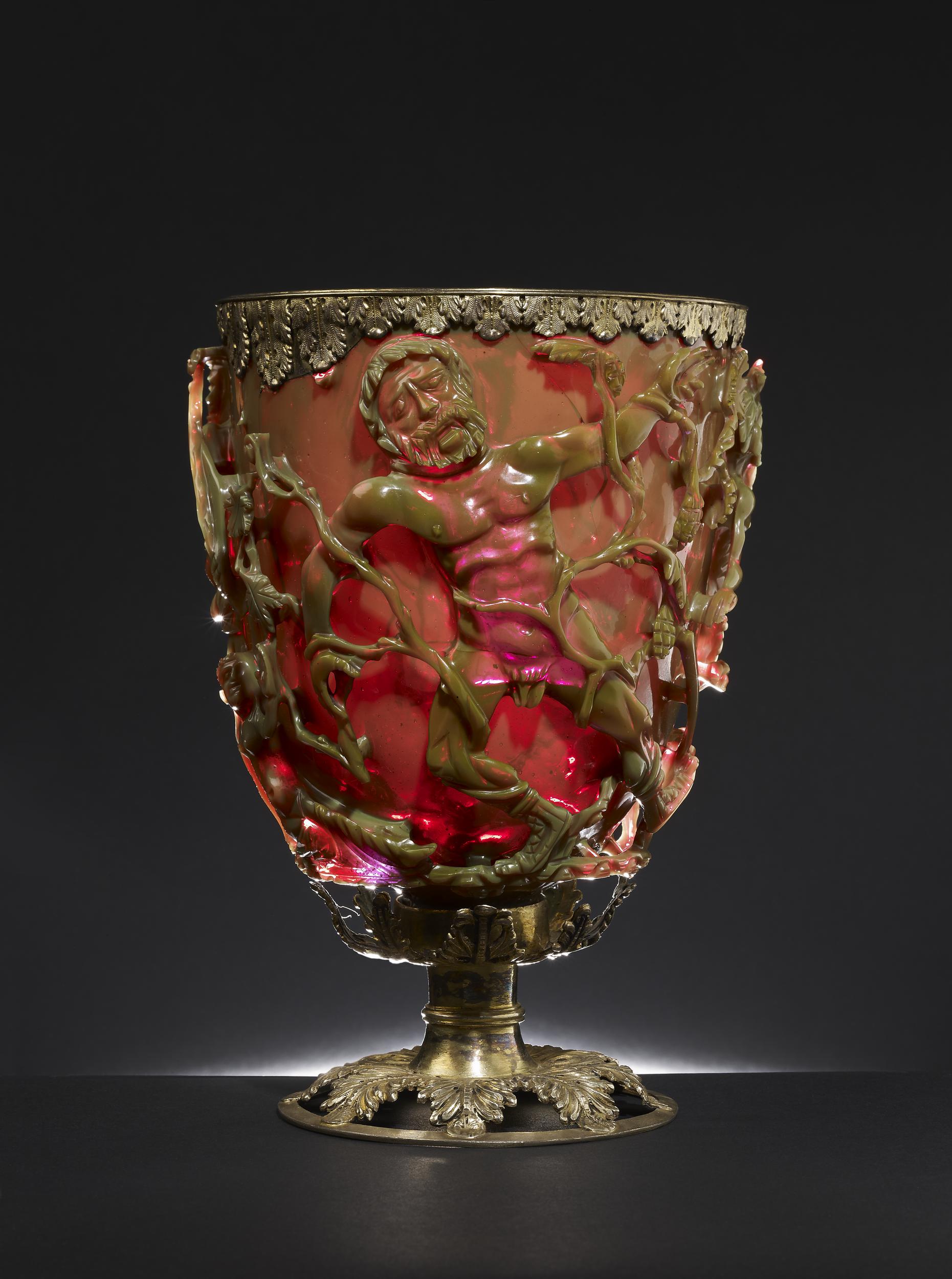This is a deeply weird object in every way possible. And as mysterious as it may be, the two core lessons are: don’t antagonise Dionysos and don’t forget the power of light.
In a previous post, I discussed the Trivulzio cup, a gorgeous, more straightforward cage cup with translucent and blue glass with an inscribed toast. The technological triumph of carving glass with such intricacy is astonishing.

Here we are faced with something even more advanced, although the 4th century A.D. date is likely the same: the green (putrid!) glass suddenly transforms into varying degrees of gorgeous ruby red when struck by light from the interior.



I am showing all sorts of views here because if you are not circling the thing itself it is hard to get a handle on what is happening: Lycurgus (who has offended Dionysos, in this case by wronging Ambrosia, his nurse) has been caught up in a punishing briar of wine vines, his vaguely hairy and sometimes wrinkly body are all woe. To his right Ambrosia (who he besmirched) is crouched (tiny) and the other side shows Dionysian hangers on, about to pelt him with rocks, etc.
But in the 4th century A.D.…what the? It really does make one wonder whether these precious cage cups were used as fancy drinking cups or lamps – and about their use and reuse? Were they ever buried at all or rather (as their remarkable condition suggests) were some entombed and some kept in church treasuries. And was this masterpiece ever really a chalice (as the mid-19th century silver trimmings make it) or really an artwork meant to be suspended, playing with the light? And what about Lycurgus? Might his trussed up pose have played well among budding Christians of the 4th century until the 19th?




